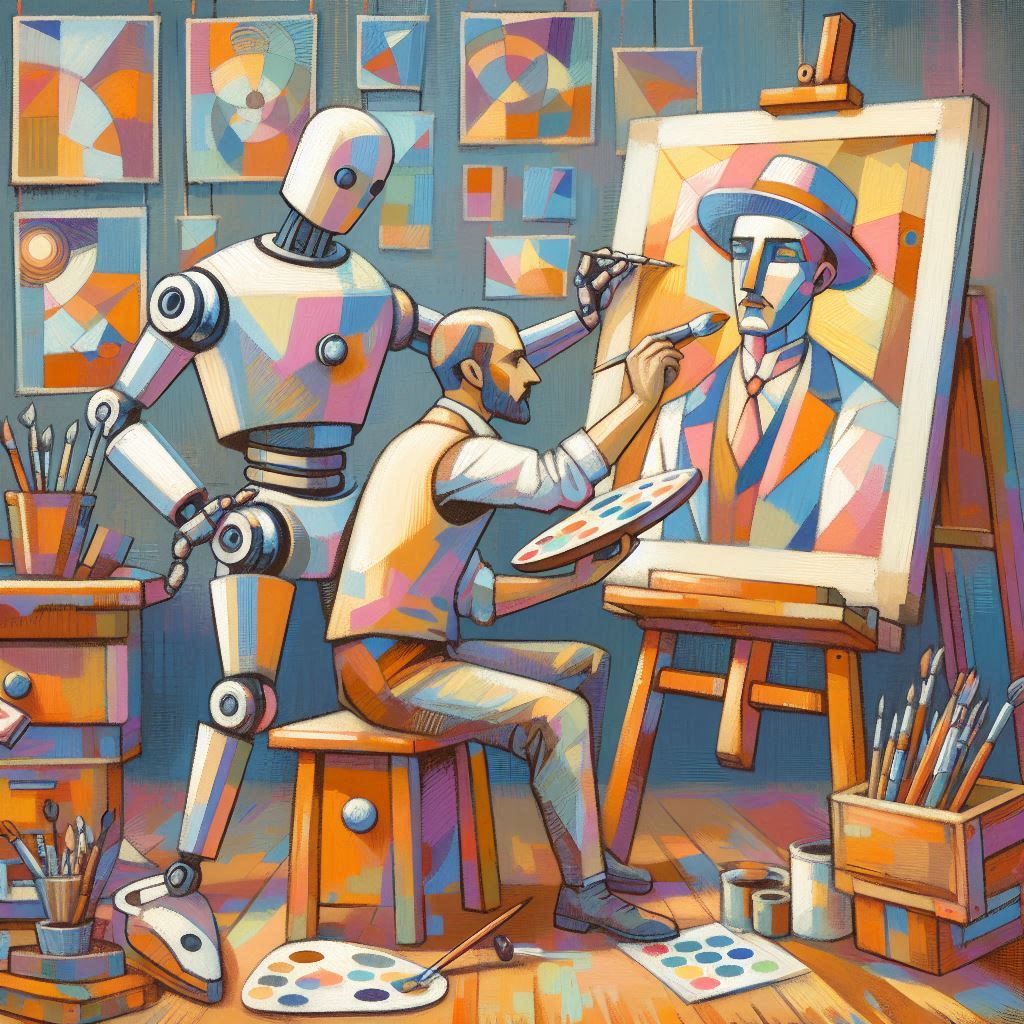How AI is augmenting human creativity
Artificial intelligence is no longer just a futuristic concept; it’s a tangible tool transforming various creative fields, most notably in the realm of art. Rather than replacing human artists, AI is emerging as a powerful collaborator, augmenting human creativity and fostering a new era of artistic expression. This partnership between human ingenuity and artificial intelligence is leading to exciting innovations and pushing the boundaries of what’s possible in art.
One of the most significant ways AI is augmenting creativity is by acting as a source of inspiration. AI models can analyse vast datasets of existing artwork, identifying patterns, styles, and themes that might be invisible to the human eye. This analysis can then be used to generate novel images, textures, and compositions, providing artists with a springboard for their own creative explorations. Imagine an artist struggling with a creative block; the AI could offer a multitude of starting points, sparking new ideas and directions.
Beyond inspiration, AI can also assist in the technical aspects of art creation.
Complex and time-consuming tasks, like generating intricate patterns or realistic textures, can be offloaded to the AI, freeing up the artist to focus on the broader creative vision.This allows artists to experiment with more ambitious and complex projects, pushing their own skills further by collaborating with the AI’s capabilities.Think of a sculptor working with AI to generate complex 3D models, or a musician using AI to create intricate harmonies and melodies.
The collaborative nature of AI art is also leading to the development of new artistic tools and techniques. Artists are learning to “speak” the language of AI, using prompts and parameters to guide the AI’s output. This process of iterative refinement, where the artist provides feedback and the AI adjusts its creations, fosters a dynamic interplay between human and machine. The result is not simply AI-generated art, but rather a unique hybrid, born from the combined creativity of both.
This collaborative process is also democratising art creation. AI tools are becoming increasingly accessible, allowing individuals with limited artistic training to explore their own creative potential. By providing intuitive interfaces and powerful generative capabilities, AI is empowering a new generation of artists and blurring the lines between amateur and professional. Someone with a strong concept but limited technical skills can now use AI to bring their vision to life.
However, the collaboration between humans and AI in art is not without its challenges. Questions of authorship and originality are constantly being debated. Who owns the copyright to a piece of art created with AI? Is it the artist who provided the prompts, the programmer who created the AI, or the AI itself? These are complex questions that society is still grappling with.
Despite these challenges, the potential of AI to augment human creativity is undeniable. As AI technology continues to evolve, we can expect to see even more innovative and exciting collaborations between humans and machines in the world of art. The future of art is not about replacing human artists with AI, but rather about embracing the potential of this new technology to expand the boundaries of human creativity and unlock new forms of artistic expression. The muse is no longer just human; it’s also in the machine.
